Art from the sea: Cahoon museum assembles giant exhibit of rare whalers' scrimshaw
Intricately carved designs fill most of the galleries at the Cahoon Museum of American Art in Cotuit as the major new exhibition “Scrimshaw: The Whaler’s Art” displays more than 250 pieces loaned from 15 private New England collections and seven museums in four states.
The exhibit, which will be on view through Oct. 30, is a journey into the unique folk-art tradition that started as part of the 19th-century whaling industry and gained increased acclaim in years to follow. All the objects are authentic, rare examples of the unique art form, carved more than 100 years ago.
Among them is the earliest known example of an American scrimshaw whale tooth, engraved by Nantucketer Edward Burdett aboard the whaler Japan between 1825 and 1829.
The collection was assembled over months from the many private collections, and from the various museums in Massachusetts, Pennsylvania, Virginia and Connecticut by guest curator Alan Granby working with museum director Sarah Johnson. Granby, who wrote a 378-page companion book for the exhibit, is a global expert in the evaluation and appraisal of scrimshaw art and longtime co-owner of Hyland Granby Antiques in Hyannis Port, which specializes in museum-quality maritime antiques.
The resulting exhibit presents an array of carved objects both practical and decorative, including baskets, boxes, tools, fashion accessories, walking sticks and utensils. There are also rare examples of carved ornamental keepsakes depicting maps, portraits, domestic scenes and patriotic images; detailed portrayals of sailing vessels; and engravings of whaling scenes.
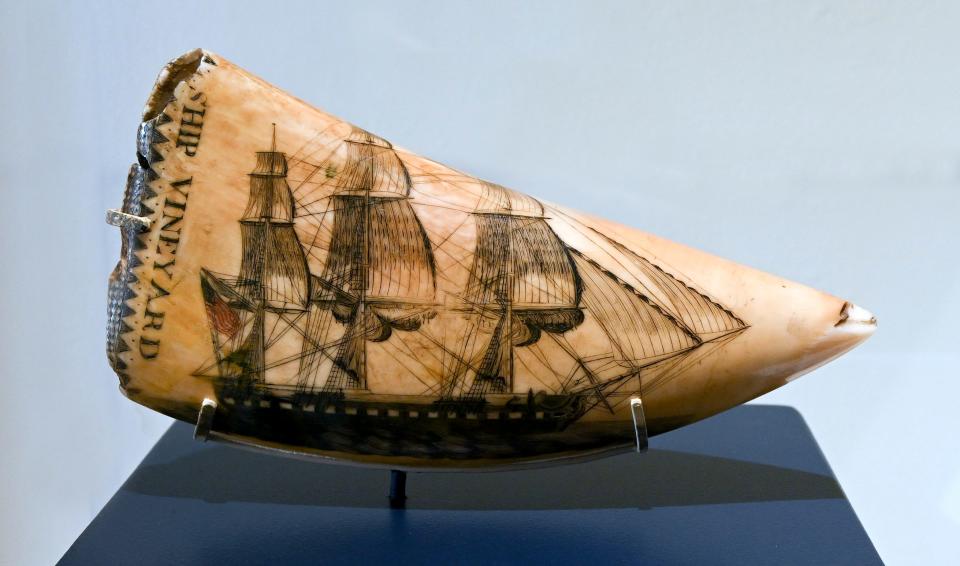
Many images had imaginative themes. One unnamed mariner depicted the infamous female pirate Alwilda, who rejected an arranged marriage in favor of commandeering a pirate vessel accompanied by a crew of female sailors, all dressed as men.
How scrimshaw came to be
Some may question the art itself, Johnson says, thinking that whales may have been killed for that reason, but that’s a misconception. Whales were hunted specifically for their oil, she says, used worldwide before the transformative development of the petroleum industry.
Scrimshaw art used the cast-off byproducts of that hunt, she says, and came into being as the men who served on whaling voyages sought to fill the many hours of inactivity and boredom during months or years at sea.
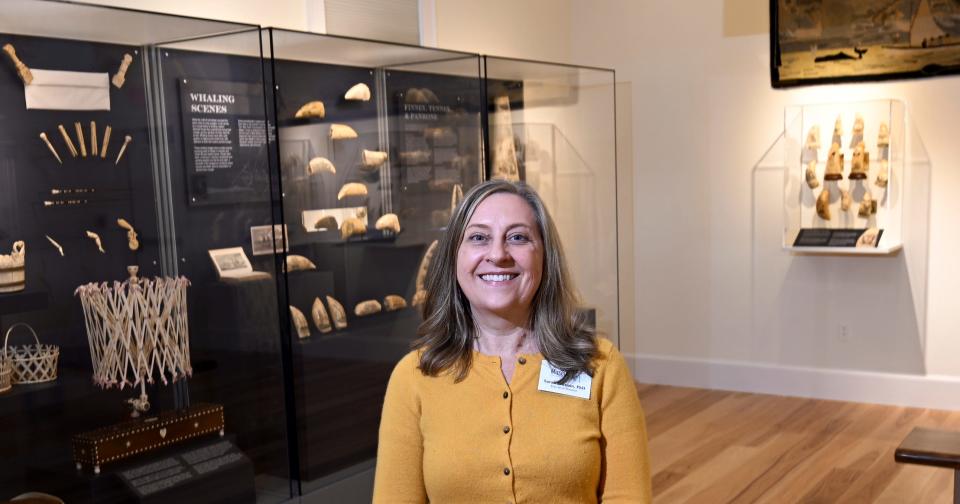
According to information from the museum, the artisan-creators, known as scrimshanders, used sharp-pointed tools, including sailcloth needles, to stipple designs directly onto the discarded ivory tooth or bone, sometimes laying a template or illustration on the object’s surface to use as an outline. The resulting images were colored with lampblack, sealing wax, India ink or even vegetable juices, all found aboard ship.
Scrimshanders often added other natural materials such as wood, metal or luminous shells like abalone and mother of pearl to embellish their unique designs. Many began to sign and date their work, designations that are prized in collections today.
Included in the Cahoon exhibit is the earliest known signed and dated scrimshaw, created in the 1820s by scrimshander Fredrick Myrick on the whaler Susan off Nantucket.
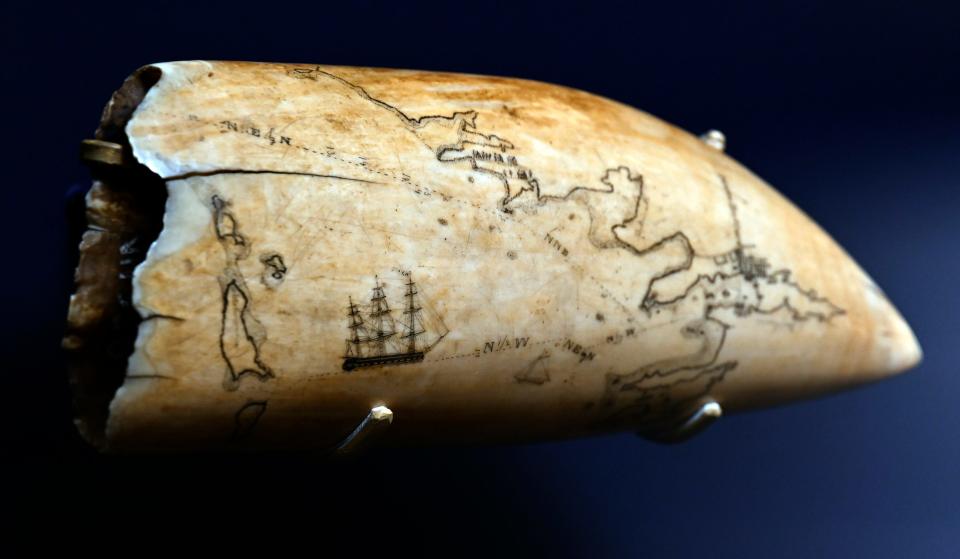
The gallery exhibit describes the process and tools that created the whaler’s art and its diversity of forms, and also offers details on the culture that developed aboard whaling vessels during many months at sea. On view are two whalers’ logbooks of the era, containing handwritten records of voyages undertaken, and augmented by the personal notations and illustrations of the log keepers.
Whaling was a vital global enterprise in the 19th century and one of Massachusetts’ most important industries, the museum information shows. Wampanoag and other Indigenous peoples became a central part of many voyages, serving in a variety of capacities.
Logs of the whales and their journeys
The exhibition gives an up-close look at two Mashpee Wampanoag whalers and their voyages. Aaron Keeter was an indentured whaler out of Nantucket, while Jesse Webquish Jr. was a career whaler who rose in the ranks to a position as chief mate and keeper of the ship’s logbook. Keeter was a crew member aboard the whaling ship Dauphin that discovered survivors of the famed vessel Essex, wrecked in 1820 after being rammed by a sperm whale.
Surviving journals have documented the two men’s travels, and an interactive touchscreen allows visitors to trace their worldwide journeys.
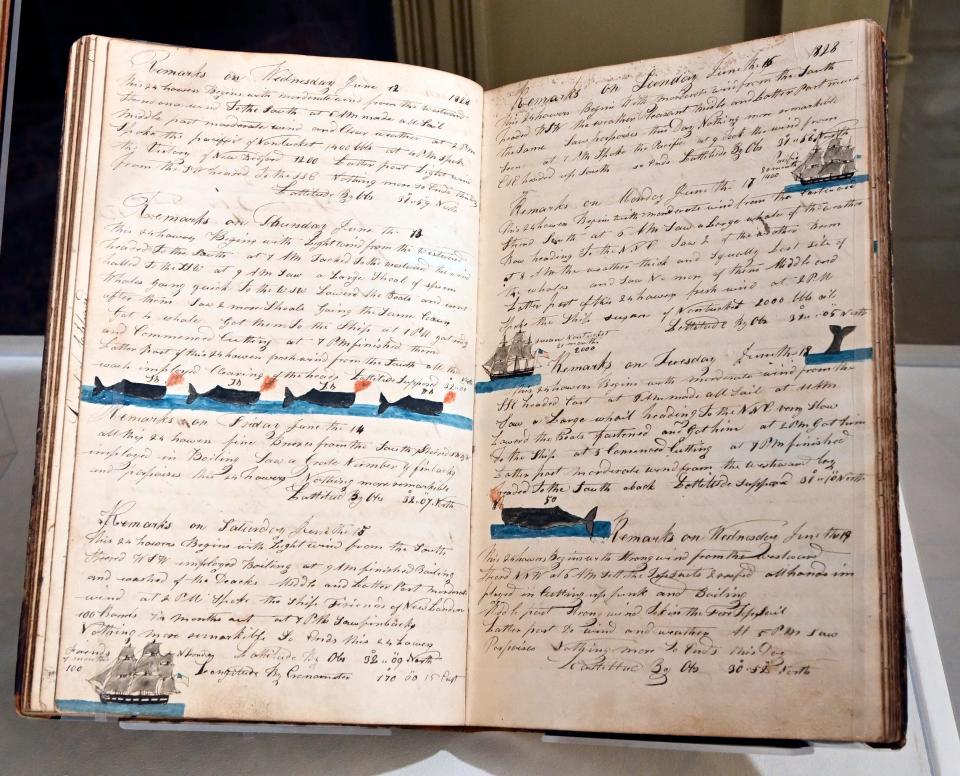
Reflecting on her hours of research and work in developing the show, Johnson acknowledges a sense of awe that such beautiful and delicate designs emerged from the rough, dangerous and often violent environment inherent in such voyages.
“While the men who set off on whaling voyages did not do so with the intent of creating art, they revealed that art can come from anywhere, emerging from anyone, even in the most difficult environments,” she says.
“They used the time that they had and what materials were available to create useful tools and objects of incredible beauty and design, often as gifts for family and friends back home.”
The exhibition, says Johnson, really is “a larger story of art and where it comes from” as well as “a way to understand history.”
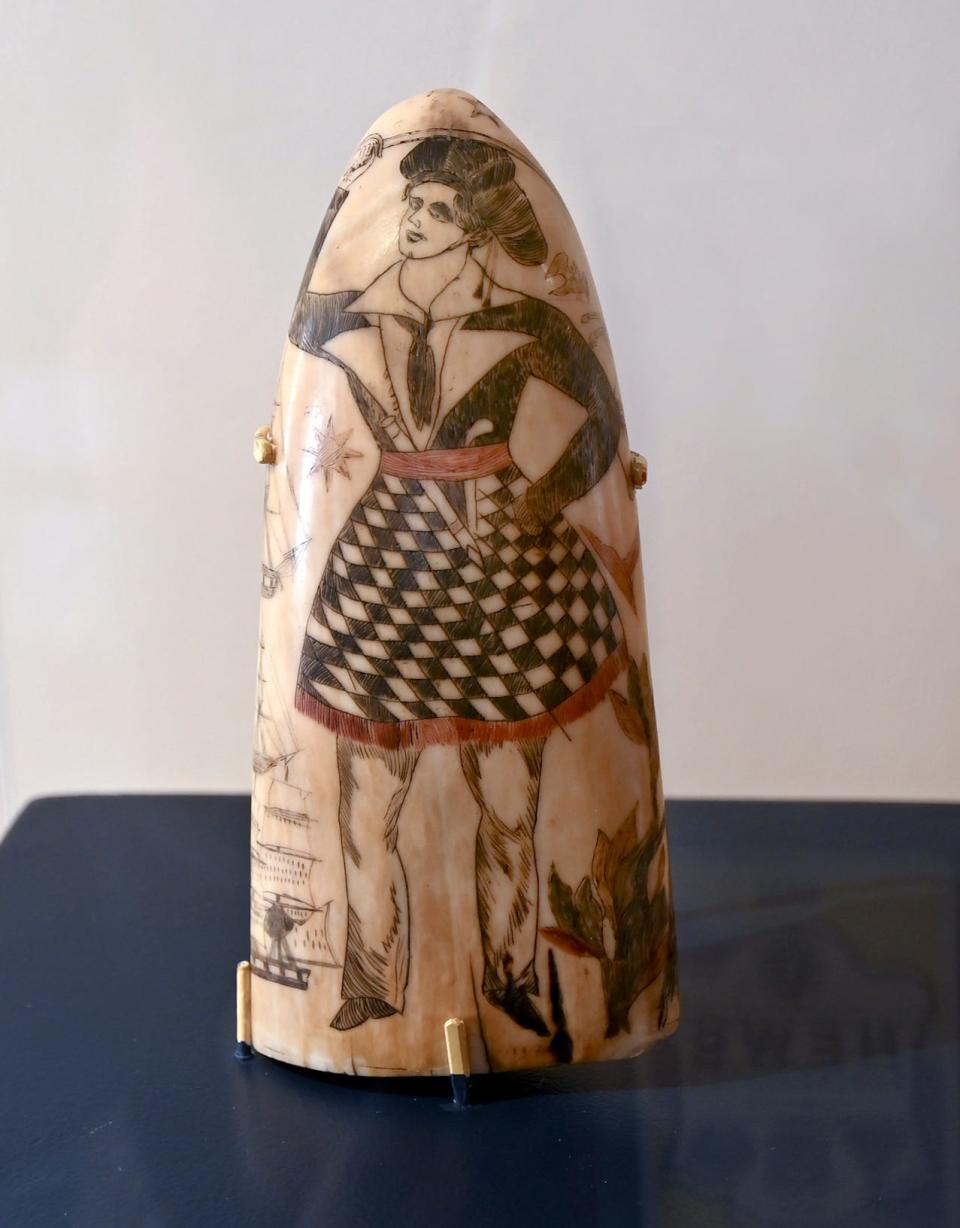
This summer and fall, the Cahoon will present a series of talks by researchers, authors and field experts who will add various perspectives about the history of scrimshaw, its unique artistry and the current collectibles market. There will also be talks on whaling captains of color and the plight of endangered whales today.
All will be held at 5:30 p.m. on various days at Freedom Hall, 976 Main St., Cotuit. For a complete list of dates, topics and speakers: cahoonmuseum.org/events.
Guest curator Granby’s companion book, “Wandering Whalemen and Their Art: A Collection of Scrimshaw Masterpieces,” is available at the museum and describes in detail the many pieces included in the show.
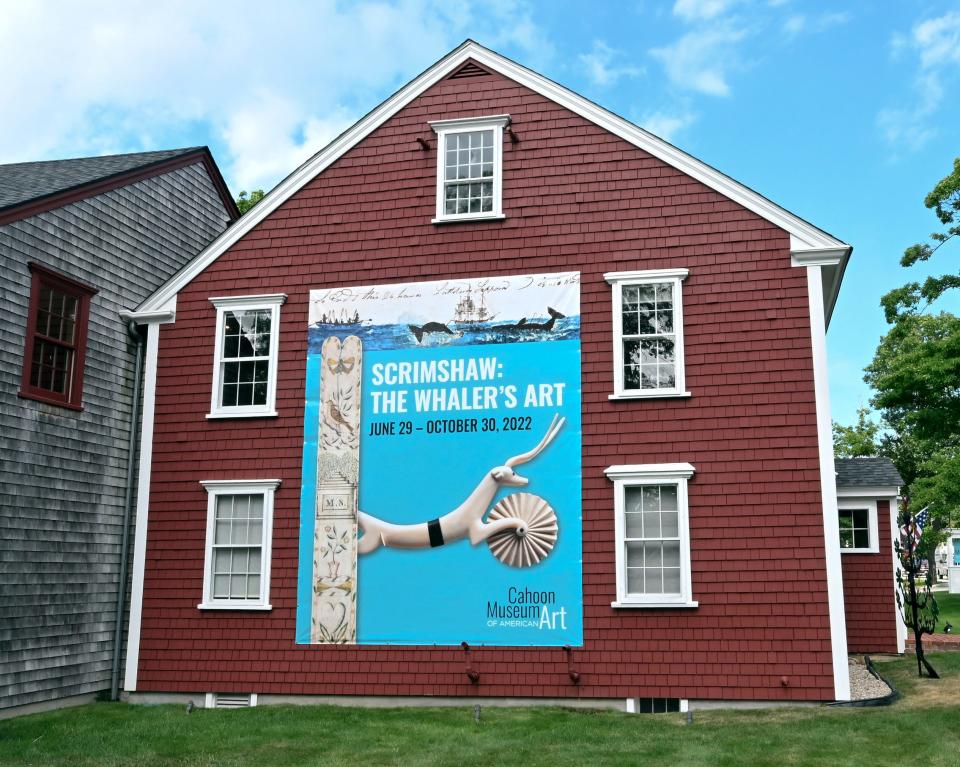
To see “Scrimshaw: The Whaler’s Art”
When: Through Oct. 30; museum hours are 10 a.m. to 4 p.m. Wednesdays through Sundays
Where: Cahoon Museum of American Art, 4676 Falmouth Road (Route 28), Cotuit
Information on the exhibit, museum programs and related talks: www.cahoonmuseum.org, 508-428-7581
This article originally appeared on Cape Cod Times: Ocean art: Cahoon museum displays rare exhibit of whalers' scrimshaw

